Opinion
Africa Must Innovate or Perish
Last month end, we published the fourth in a series of Nigeria’s 50th anniversary lecture delivered by Philip Emeagwali as part of the celebrations by Nigerians in France at the Embassy of Nigeria, Paris. This is the fifth and last part of the series sent in from Washington, DC, United States. Excerpts.
Nigeria has approximately a 50-year supply of oil if no new oil is found. In a world without oil, the cutlass will replace the farm tractor. We know most oilfields have been discovered and that oil exists in limited quantities. We know that oil wells dry up after 50 years. Rather than debate the exact year when Nigeria will run out of oil, I prefer to imagine we’ve already run out. The arrival of that day is as certain as the death of the Oloibiri oil well.
If Nigeria’s oil well number one is empty and abandoned, what will be the fate of its oil well number one thousand? It may come sooner than any of us expect. Our heirs will thank or curse us for the amount of oil we leave for them.
Scientific discoveries lead to technological inventions and are the foundations of knowledge: the knowledge that must precede the development of new products, services, industries, jobs, and new wealth.
In human history, technological development and economic growth have gone hand-in-hand. A nation that is second to none in science is second to none in economic power. The grand challenge for African scientists is to make discoveries and inventions that can be domesticated and diffused into the continent’s economy.
It’s innovation and technology that create new products, which, in turn, create new wealth that alleviates poverty. For every ten gallons of oil in our oilfields, only three can be recovered. My discovery that an internet can solve physics problems by sending and receiving answers via emails is one of the innovative tools, techniques, and technologies used to recover maybe one percent of the remaining seven.
In 1989, while solving one of the 20 grand challenges in supercomputing, I broke world records in computation and communication. It garnered international headlines and I, the mathematical storyteller, became both the story and the witness.
I broke those records by reprogramming and reinventing an internet comprised of 65,000 subcomputers to compute and send and receive e-mails to and from 65,000 unique e-mail addresses and to solve 24 million equations, each restating the laws of physics at a world-record speed of 3.1 billion calculations per second.
My belief is that a scientist has to be more than a witness; he or she must be a person of ideas, in constant search of better rules. There is always room for better rules.
I reformulated and reduced Newton’s Second Law of Motion to 18 equations and algorithms, the mathematical lyrics of the Earth. My discovery of those equations and algorithms was front page news.
One day I received a phone call from an American mathematician working in Germany who had read about my discoveries in the Wall Street Journal in June of 1990. I explained to him the grand challenge equations I invented and solved. I said to him:
“At its physicalized core, three of the six primitive partial differential equations of meteorology used to forecast today’s weather are the same as the nine equations I invented for recovering more oil from oilfields and are the same as the Navier-Stokes equations.”
It was an “aha” moment for him. He bombarded me with technical questions. I answered:
“They are the same because they emanated from the Second Law of Motion of physics. They’re calculus restatements of the Second Law which, in turn, are restated as the simple algebraic equation: Force equals Mass times Acceleration or F=ma.”
He became excited and pleaded with me to give a lecture in Washington, D.C. on July 8, 1991 at a session he was chairing at an international congress of applied mathematicians, held once every four years. The ten thousand attendees comprised the largest gathering of the Who’s Who in mathematics.
I attended but I was dismayed and said to myself: “The first mathematics textbook was authored 3,700 years ago by an African named Ahmes. Yet, an alien at this conference would think they are no blacks on our planet.”
I am often asked to share my visions of the future and to predict how the internet could be used to solve Africa’s problems and create new possibilities for its people. My answer is that the internet will accelerate globalization even more and transform Africa, and that in the globalized world of the twenty-second century, there will be more Africans outside Africa than inside. Lagos will become an international metropolis and Africans will abandon their traditional clothing, cuisine, and cultural markers, becoming no more African than the black American. Many Africans in Africa will have a mixed racial heritage, like that of Barrack Obama.
While I predict this trend, I also question it. Is it progress for Africa to lose that which makes it unique? Ironically, developing a better technology also Europeanizes the African identity through globalization. A similar historical example can be found in the invention of the compass, which made it possible to sail across the Atlantic Ocean. This spawned the devastating Atlantic slave trade, which began in Africa on August 8, 1444.
It covered four continents and lasted four centuries. It forcibly uprooted millions of Africans to the Americas. It stripped Africans of their language, culture, and identity. It led to the African diaspora, with one in five Africans resettling in the Americas.
The future is for us to create, but first we must outline our vision. Foot soldiers, not generals, will lead our war against ignorance. The foot soldiers are our one hundred million young Nigerians whose weapon is knowledge. Their collective intellectual capital will enable them to build a stronger Nigeria using technology.
My 50-year vision for Nigeria to tap into the creativity of our young people. They have the potential to uplift humanity. Technology is all around us and we are constantly inventing and reinventing new tools, techniques, and technologies. That journey of discovery to the frontier of science reaffirms humanity’s goal to endlessly search for new knowledge, and to demand more of itself. Let’s do the best we can to make the world a better place through technology.
Emeagwali has been called “a father of the Internet” by CNN and TIME, and extolled as a “Digital Giant” by BBC and as “one of the great minds of the Information Age” by former U.S. President Bill Clinton. He won the 1989 Gordon Bell Prize, the Nobel Prize of supercomputing, for reprogramming 65,000 subcomputers as an internet that helps recover more oil.
Philip Emeagwali
Opinion
Other Sides In Junior Pope’s Death

The tragic boat mishap of Wednesday, April 10, 2024, which claimed the lives of popular Nollywood actor, Mr John Paul Obumneme Odonwodo, popularly known as Junior Pope, and four others, has sent shock-waves across the Nigerian movie industry, and set the social media buzzing with reactions.
A contingent of 12 movie crew members had set out for a boat journey from the River Niger Cable point, a waterside jetty at Asaba in Delta State, to cross to the other side of River Niger, into Anam, a riverine community in Anambra State, for the shooting of a movie set titled ‘Another side of Life’ produced by Adanma Luke. Unfortunately, a series of avoidable events culminated the journey into an ill-fated expedition that sent fives lives to ‘the other side of life.’ The incident made the movie’s eventual ban a nullity, having played-out its symbolic meanings in real life while in the making, rather than on envisaged screens.
An avoidable incident, it exposed our society’s casual attitudes towards marine and general safety, as well as our endemic superstitions, while telling, on several flaps, other side tales of reality in the accounts of what transpired during the production, or rather, play of Adanma’s ‘Another side of Life.’
While veteran actor and Senior Adviser on Military Relations to the President of Actors’ Guild of Nigeria, Mr Steve Eboh, claimed he missed joining the ill-fated boat because he arrived too early before the crew, and had to go back, the producer, Adanma Luke, claimed she missed it because she came too late.
A journey’s jolly take-off from Asaba, Delta state, which ended tragically in its return from the other side in Anambra State, proved to be a rascally journey that showed the other side of rascality, even as T. C. Okoye claimed that pre-performing of obeisance to some marine spirits saved his life. But it was T. C. Okoye who had to hang unto a boat’s anchor in the face of death, rather than rely on the powers of the spirits he had appeased with Fanta, to await rescue from mortal men – sensible men, whose advise that one needs wear life jack during marine journeys – he had forsook, yet gave glory to his rituals after rescue.
Conversely, one may flip the flap to consider the other side of T. C. Okoye’s rituals to ruminate on other possibilities. Could the ringing of bells, spraying of money and snacks, and pouring of Fanta, have evoked the anger of the ‘marine spirits’ as rumoured, or distracted the boat driver, to the point of accident? And as reported by The Punch, what’s the significance of T. C. Okoye ‘dashing’ ritual money to innocent children whom circumstance made to be by the riverside?
Also, the argument by Mr Steve Eboh, that “If the star actors in that boat had wanted to wear life jackets, they would have been given the jackets” holds no ground, because the guild, as well as all the marine transport stakeholders, should have enforced strict safety compliance by all voyagers. It is therefore commendable that the Anambra State Commissioner of Police, Aderemi Adeoye, has ordered exhaustive investigations into the matter to determine criminal liability of all persons involved.
However, in the melee of pandemonium that accompanied rescue efforts, Nollywood celebrities, our society’s supposed role models, prioritized superstitious rescusitation over sure medical practice, rushing victims between spiritualists and hospitals, until a ‘pope’ whose work and journey had bound with the superstitious, died amidst superstition. Indeed, it’s during crises, when people care less about ‘packaging,’ that truth and the real personality of humans stand bare and naked.
While medical personnel who got their chance late had certified Jnr Pope dead, our star-persons held unto their spiritual advisers who claimed his spirit coming back to life, up until reality finally dawned that pope’s spirit has permanently crossed to the other side of life.
Regrettably, the reality has not fully dawned, otherwise three corpses shouldn’t have been buried by the riverside as dictated by spiritualists, and Jnr Pope’s family shouldn’t be worried about what would happen, as rumoured threatened of his three children, if his corpse is not buried by the riverside. However, it appears that having encountered the influence of a frontline celebrity, the spirits have turned capricious by bending divinely demands to accepting two cows, as rumoured, in exchange for Jnr Pope’s corpse being buried elsewhere.
According to the Anambra State Police Public Relations Officer, SP Tochukwu Ikenga, a team of rescuers comprising men of the Anambra State Marine Police Command, the National Inland Waterways Authority (NIWA) and the Maritime Workers Union of Nigeria, with the aid of fisher men, rescued seven persons alive to the Anambra side, while two retrieved corpses were sent across the other side, to the Delta State Marine Police Command jetty where Nollywood officials stood waiting. Of other three victims, two corpses were rescued next day, while a third was thrown out by river tides, all of whom; Abigail Fredrick (Vice Chairman of Costumer Designers Guild of Nigeria, and Akwa-Ibom State-born make-up artist), Precious Oforum (Sound engineer) and Joseph Anointing (Gaffer), have since been buried by the riverside, according to local belief.
However, what the police PRO’s statement didn’t reveal is if Jnr Pope’s corpse was sent to the other side in Delta after all the back and forth between spiritualists and medical personnel within Anambra, or if it was sent straight upon rescue to Delta state, but mysteriously found its way back to Anam, on the Anambra side.
It’s unfortunate that Nollywood which set out in its early days to expose superstitious beliefs and practices in our societies, in the hopes of enlightening the minds of the masses, and to curb the manace, has made many believe it’s rather reinforcing superstition in the ways it condicts the movie industry business.
Members of the showbiz in general, now appear to be key protagonists of superstition to the point that, being perceived as role models, so many youths have been drawn to lives of unrealistic dreams and materialism, which often get pursued through ritualism, with its attendant crimes.
Joseph Nwankwo
Opinion
The Value Of Books And Reading
The quality, quantity and diversity of books produced by a society are important indicators of that society’s level of development. . . .”–Valdehusa (1985).
April 23 of every year is marked around the world as ‘World Book and Copyright Day.’ Also known as ‘International Day of The Book,’ it is a Day set aside by the United Nations Educational, Scientific and Cultural Organisation (UNESCO), to promote reading, publishing and copyright. The Day aims to change lives through a love of books and shared reading. The theme for the 2024 ‘World Book Day’ is: “Read Your Way.” This year’s theme calls on everyone to let go of pressure and expectations, giving children a choice – and a chance to enjoy reading.
According to Audrey Azoulay, Director-General of UNESCO: “Books have the unique ability to entertain and to teach. They are at once a means of exploring realms beyond our personal experience through exposure to different authors, universes and cultures, and a means of accessing the deepest recesses of our inner selves.” Therefore, the power of books should be leveraged to combat isolation, reinforce ties between people, and expand our horizons, while stimulating our minds and creativity. It is critical to take the time to read on our own, or with our children.
Did you know that The Bible stands out as the most widely translated and distributed book worldwide? Yes, the Bible is by far the most widely translated and distributed book! Its wisdom has reached and helped more people than any other book or publication. 96.5 percent of the world’s population has access to the Bible. The Bible is available (in whole or in part) in over 3,300 languages, and the estimated number of copies of the Bible produced is 5billion, far more than any other book in history. Which other book(s) do you enjoy or have you enjoyed reading? As for me, one book I am currently enjoying reading is a 400 – 500 page healthcare handbook titled, Where there is no doctor, authored by David Werner. It is a very valuable healthcare handbook that I have found to be very very beneficial! In fact, this healthcare handbook has been fondly described by some as “the ‘Bible’ of health education,” and I strongly recommend that every family should have a copy of this book at home. Apart from this book, I also enjoy reading for pleasure children’s books, such as those I have found on booksmart.worldreader.org and www.africanstorybook.org. What about you? What books have you enjoyed or do you enjoy reading? Do you know about the book industry? There are three major sectors of the book industry. They are: publishers, booksellers and libraries.
Book publishing is channelled towards promoting learning and expanding knowledge. In a strict sense, book publishing starts from the point of conceptualisation of the ideas for the book by the author, and ends at the very last stage – the end-user (the reader). The history of book publishing in Nigeria can be traced to the establishment of the very first publishing press in Calabar, in 1846, by Rev. Hope Waddel of the Presbyterian Church of Scotland Mission. The press was used to print Bible lessons and later arithmetic books for schools.
In 1854, another Missionary based in Abeokuta, Rev. Henry Townsend of the Church Missionary Society (CMS), established a Press. Five years later (1859), he used it to print the very first newspaper in Nigeria – ‘Iwe Irohin.’ Thereafter, notable Nigerians like Herbert Macaulay established the first indigenous newspaper in 1926, called Lagos Daily News. Also, in the same year, Daily Times made its debut. In 1949, Oxford University Press (OUP) floated a sales outlet in Nigeria. This action attracted many foreign-based publishing firms to Nigeria, such as Macmillan, Longman and others. The first published book in Nigeria by OUP was released in 1963, when its local branch published ‘Ijala Ere Ode’, a Yoruba poetry genre by Oladiipo Yemitan. Aside from the foreign companies, many other home-based publishing houses were architected by indigenous entrepreneurs. The book publishing industry in Nigeria has continued to enjoy drastic growth ever since.
However, in the last few decades, the Nigerian indigenous book publishing industry has experienced a downturn due to numerous challenges facing the industry, including: book piracy, proliferation of unqualified author -.publishers, lack of capital, and inability to provide adequate numbers of high-quality books.
Other challenges include: poor reading culture, infrastructural decay, dearth of expertise, incessant rancour among the major stakeholders, and so forth.
Therefore, here are some suggestions for developing our book publishing industry in Nigeria: Stakeholders such as government, publishers, authors, regulators, booksellers, libraries, and readers should cooperate among themselves and contribute their quota immensely towards the development of a virile book publishing industry. Private investors such as banks, finance houses and influential individuals should participate, especially in terms of massive capital injection.
Ighakpe writes in from FESTAC Town, Lagos.
Daniel Ighakpe
Opinion
Let The Poor Breathe
In the history of our nation, only petroleum products have suffered more incessant increments in prices than electricity supply in all public products and services. Unfortunately, those are the two main things that impact mostly on our lives and national economy. While the increment in petroleum products’ prices is always attributed to the price of crude oil at the international market and the need to curb the scarcity by encouraging the supply, the increment in the electricity tariff has never had any justifiable reason and no service improvement afterwards. In fact, the electricity supply has gone far worse now that the tariff has gone up by over 300 percent. One of the underlying reasons for the planned electricity subsidy removal as unconsciously relayed by the Minister of Power on TVC News is the sabotage of the system by those collecting the subsidy money to maintain the assets. He said: “These are assets that we spend the country’s money on, and our brothers deliberately sabotage them. So, you can see that some people are hiding somewhere that do not want this sector to work”.
Just as the petroleum subsidy must go because the government is too impotent to handle the petroleum subsidy racketeers, the electricity subsidy has to also go at the expense of the poor masses and no one has been prosecuted for it.
When the oligarchs rob us blind, the poor masses are made to pay. The only tool that seems to be at the disposal of this government for the combat of economic challenges brought by the corruption of the political elites is to make the poor masses suffer deprivations.
No doubt, stopping the monkeys from the banana plantation is a Herculean task. But those with their thinking caps on will not need to destroy the banana plantation to ward off the monkeys. The Federal Government has taken several decisions in the last one year that are akin to milking the debilitated cow to feed the virile buffalo. The electricity tariff now has to go up to make more money for the oligarchs that sold our collective heritage to themselves and have been taking money from us for next-to-nothing service delivery.In order to win the supports of the poor masses of Nigeria, the tariff was classified and made to seem like it isn’t going to affect the poor, while the poor will invariably be the worse for it. Most of those on Band A electricity tariff, who are to be paying very exorbitantly for electricity are companies producing most of our consumables and utility items. With the high cost of electricity, the production cost will go high and consequently, the cost of the products. By the time the effects of the new electricity tariffs take full manifestation, almost everything that can make life meaningful will be beyond the purchasing powers of most Nigerians.
I can not help but to wonder what exactly is left for us to benefit as citizens of this country. Nigeria is rapidly moving towards a capitalist nation, where everything is commercialised and profit at the expense of the citizens is the priority. Medicare and even public education are now being run for profit. The government goes about with the shenanigans of education for all, while it is making education unaffordable to most Nigerians. Even the students’ loan, as badly conceived as it is, is also with interest. Those who have been in power since our democratic dispensation belong to that generation of Nigerians that the nation had been very benevolent to. They were educated for free, got paid salaries as students and given jobs on a platter after graduation. This generation of people got everything from Nigeria and unfortunately have refused to give anything back. They have not only been ungrateful to Nigeria; they have also systematically run the country aground. What a waste of investment Nigeria has made in them! While some countries in this same Africa hardly experience power outage in a year, our own B and A category would at best experience four hours of power outage in a day. These are the ruins they have led our country to in 21st century.
The timing and manner that these anti-welfare policies were introduced are indicative of lack of concern for the citizens of this country. A lot of Nigerians have lost their lives in choking circumstances. Please, let the poor breathe! While trying to rebuild Nigeria, the poor masses should not be made to feel like the eggs in the preparation of omelette. It is very obvious that you do not care about how many eggs are broken, so long as you can have the hen.
Abdulrasheed Rabana
Rabana, is a public affairs analyst .
-
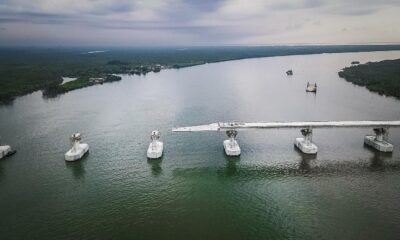
 News4 days ago
News4 days agoBonny-Bodo Road: FG Offers Additional N20bn, Targets December Deadline
-
Business4 days ago
Nigeria Set To Get $2.25bn World Bank Loan … Plans Diaspora Bond
-
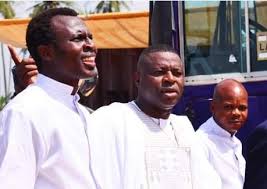
 Rivers20 hours ago
Rivers20 hours agoCleric Attributes Nigeria’s Unity To God’s Grace
-
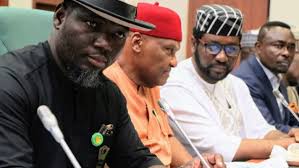
 Oil & Energy16 hours ago
Oil & Energy16 hours agoReps Committee Summons Kyari, Others Over Environmental Degradation
-
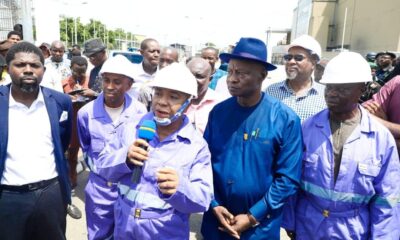
 Niger Delta4 days ago
Niger Delta4 days agoMile One Market: Committee Commences Verification Exercise …Denies Allocations Of Shops
-
Sports4 days ago
Chairman Lauds NPFL Referees Improvement
-

 News17 hours ago
News17 hours agoNDLEA Intercepts Cakes Laced With Drugs
-
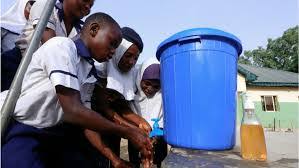
 Environment16 hours ago
Environment16 hours agoFG Unveils Framework For Washcom Formation, Management

